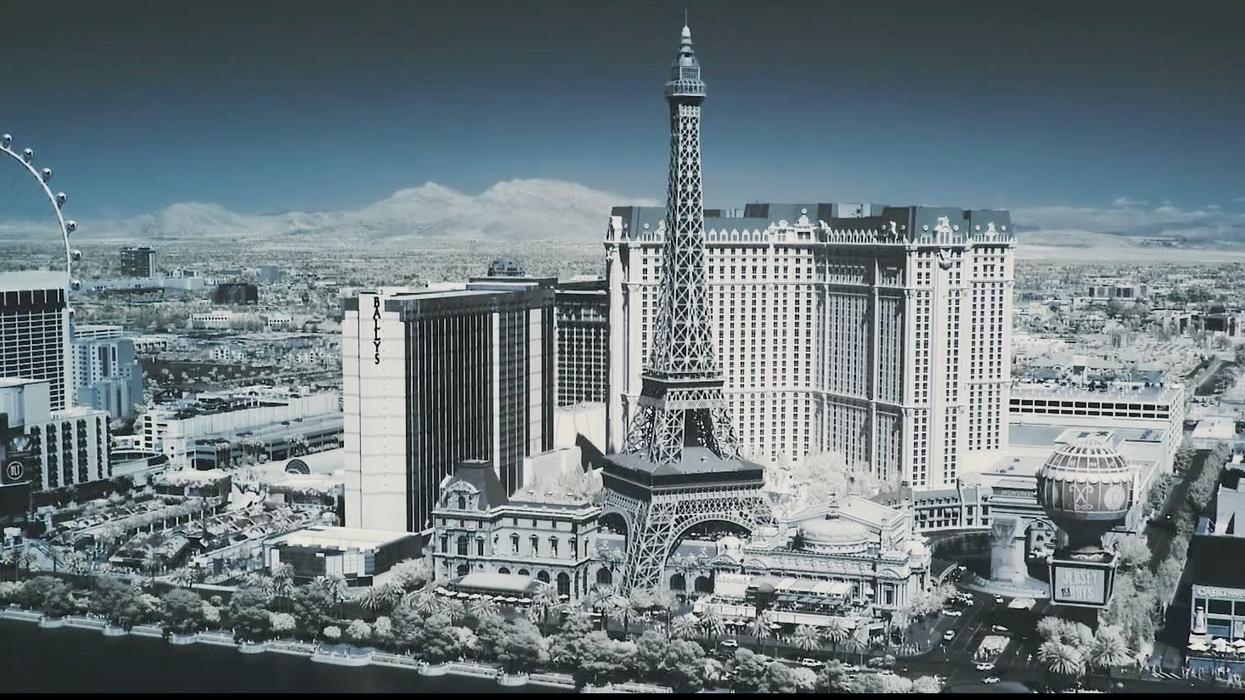Mind-Blowing Experiments with Infrared Cinematography
A British filmmaker and blogger took his camera to the streets of Las Vegas to shoot this nifty infrared video.

Phillip Bloom has offered some fascinating insight into the artistic usage of infrared video in previous blog entries, but his latest really stands out as a testament to the neo-apocalyptic feel the technique can provide.
During his coverage of NAB 2016, Bloom was able to get out and experiment with a modified Canon 5D Mark III with a 720nm filter and a Sony RX100 II with a “super color” 590nm filter. Bloom goes more into detail with his experience with the RX100 here (it's safe to say he's a fan). If the video below is any indication, the camera certainly does wonders with slow motion footage.
You can read a more detailed write-up about how Bloom captured this footage and his work in post production in his blog post. He summarizes his efforts with infrared, noting:
"I have had some people say they don’t understand why I am doing this as it could 'easily be done in post'…it can’t. Infrared shooting is more than just funky colours; it is capturing light that we cannot see, and the way the camera interprets it is utterly unique. Perhaps with a huge amount of work you could copy the colours and luminance, but we are talking a massive amount of work and you would need the reference of a real IR captured image to directly copy it, as the subtleties of the look can change drastically with different lighting conditions."
Bloom also delves into the science behind infrared technique:
"The below image shows what the human eye can see out of the entire electromagnetic spectrum of light (which is HUGE). We can see between 400-700 nanometers (nm) this is called “visible light.” Below that we have Ultraviolet light, X-rays etc…just above visible light is Infrared, and after that we have heat and radio waves. The infrared that I have been trying to capture is just above the red of this visible light at 700nm up 1000nm or 1 micrometer. Blue is the lowest colour in the spectrum at around 400nm whilst dark red is at the other end at around 700nm."
Here a few of Bloom's other experimentations:














